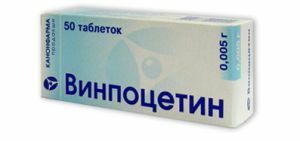 Reye's syndrome has its name in honor of the pathologist from Australia Reye, who in 1963 gave a complete and detailed description of the clinical picture of the disease. The disease is also known in the medical literature under the name of white liver disease or Reye's syndrome. This disease is acute and rapidly progressive.
Reye's syndrome has its name in honor of the pathologist from Australia Reye, who in 1963 gave a complete and detailed description of the clinical picture of the disease. The disease is also known in the medical literature under the name of white liver disease or Reye's syndrome. This disease is acute and rapidly progressive.
Reye syndrome occurs in children and adolescents under 16 years of age, in adults it is extremely rare. Begins as a vomiting, followed by psychomotor changes( most often excitation), followed by apathy, inhibition and the teenager falls into a coma. Along with this, very dangerous for life disorders occur in the liver.
Acute hepatic encephalopathy was identified as a consequence of the use of Aspirin, which was taken to treat an infectious disease. Over time, numerous Rhea-like diseases were identified.
It is for this reason that it is customary to isolate Reye's syndrome( classical) and Rhea-like syndromes( all of which have been called atypical Reye syndrome).
The incidence of the disease is not the same in different countries. So in the UK this is 0.1 case per 100 000 population, and in the USA this is one case per 100 000 population.

Pathogenesis and causes of
syndrome Unfortunately, to date, the pathogenesis of the occurrence of Ray's syndrome in children is not fully understood. At the moment, doctors believe that white hepatic disease occurs when combining such factors as:
- the presence of a child or adolescent virus disease;
- use for the treatment of Aspirin.
In the classical version, the syndrome occurs when children are taking Aspirin, while they are sick with ARVI, influenza, and also with diseases such as chicken pox, parainfluenza or herpes.
It is very important that the syndrome develops not in violation of the dosage of the drug, but in its application in accordance with the recommendations of the doctor, taking into account the age characteristics of the drug.
It is noted that, in addition to Aspirin, there may be substances that are mitochondrial poisons for the Re-like syndrome. This is hypoglycine, various insecticides, valproate.
In the UK, scientists concluded that approximately 10% of cases of Reye's syndrome are caused by impaired metabolism. Often this is fatty acid dysmetabolism, disorders in the urea cycle, lack of carnitine transferase or glycerin kinase.
From the biology point of view, this disease causes a malfunction in the mitochondria, which ultimately leads to apoptosis( death) of 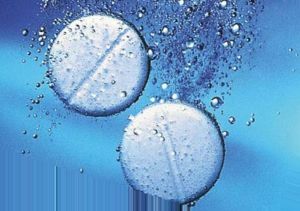 cells. In this process, medicines act as a trigger( start the process).In this regard, one of the hypotheses is the assumption of congenital subclinical insufficiency of mitochondrial enzymes in individuals with Ray's disease.
cells. In this process, medicines act as a trigger( start the process).In this regard, one of the hypotheses is the assumption of congenital subclinical insufficiency of mitochondrial enzymes in individuals with Ray's disease.
Since detoxification takes place in the liver, its cells( hepatocytes) are the first to collide with salicylic acid of Aspirin and the mitochondria begin to die first in them. The death of liver cells begins, which leads to a violation of the detoxification function of the liver.
The blood content of ammonia and liver transaminases increases sharply, and the concentration of these substances is several times higher than normal. It is these substances that act on nerve cells and lead to rapid encephalopathy and ultimately, swelling of the brain.
The diseased child has a small-drop type hepatosis from the point of view of morphology, which is observed around the periphery of the hepatic lobules. However, fatty degeneration is noticeable in the heart muscle, pancreas and kidneys. As for nerve cells, neurons change in a degenerative manner, and astrocytes undergo a very strong edema.
Symptoms of the disease
As a rule, Reye's syndrome is determined after three days after the infection. However, there are cases of fixation of the syndrome in 12 hours or after 21 days after the completion of the viral disease. When smallpox, the disease is fixed for 4-5 days after the appearance of the rash.
In the development of Reye's syndrome, the following phases can be identified, each with its own symptoms:
- Phase one .The main symptom is vomiting, and it occurs often.
- Phase two .During 24-48 hours after the beginning of vomiting, obvious changes in the nature of the child's behavior, from overexcitation to apathy and inhibition in reactions, are recorded. The child is not interested in toys, he stops talking, he has no appetite, and it is becoming more difficult and difficult to contact the child. The child ceases to navigate in space and it is quite possible to go into a coma. In this condition, a small patient may be from a few hours to several weeks.
- Phase three .The final stage of the development of the syndrome is the cessation of breathing.
In patients with atypical Reye syndrome, clinical manifestations of the disease are similar and most often occur during the first five years of a child's life.
In general, physicians characterize the course of the development of the disease as rapid and without proper treatment leading to a fatal outcome. For the sake of fairness, it should be noted that the syndrome has been fixed in a mild form with spontaneous stopping of the development of the processes.
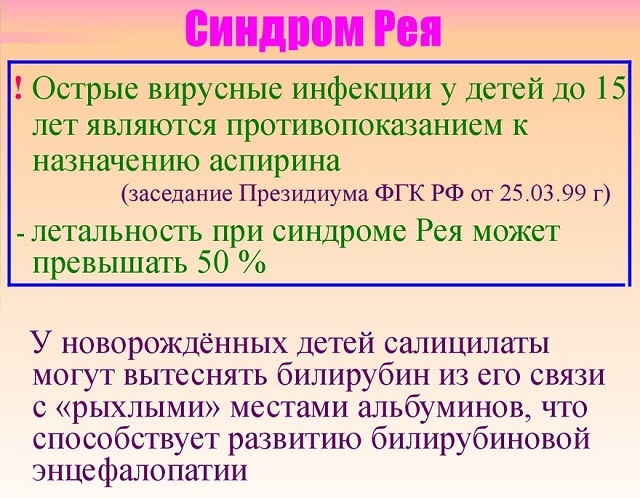
Diagnostic criteria
It is very important for a pediatrician to diagnose the symptoms of Ray's syndrome in time for the treatment of a viral infection with Aspirin. Typical clinical manifestations of the disease are vomiting and enlargement of the liver. These are the symptoms that should worry the medic first.
To diagnose the syndrome it is necessary to conduct:
- blood test( biochemical) to determine the level of activity of the major liver enzymes;
- is ultrasound;
- investigation of spinal cord fluid( CSF);
- liver biopsy.
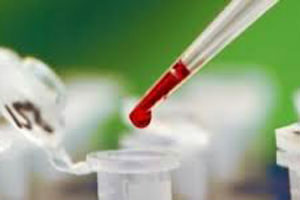 In a blood test, as a rule, bilirubin is normal, but 3 or more times more( cases and 20-fold excess) of AST and ALT( marker liver enzymes) are recorded.
In a blood test, as a rule, bilirubin is normal, but 3 or more times more( cases and 20-fold excess) of AST and ALT( marker liver enzymes) are recorded.
Also a bad sign is the increased concentration of ammonia. In some patients, hypoglycemia is observed( most often children under five years of age).As for the presence and concentration of electrolytes in the blood, it can vary greatly due to vomiting or refusal to receive fluid.
Often the syndrome is accompanied by a disorder in blood clotting and this is clearly seen on the coagulogram. At the same time, a clinical blood test is within the normal range, it may slightly differ in the number of white blood cells, no more.
To determine the pathology in the central nervous system, a puncture( lumbar) is performed. On ultrasound clearly visible increase in the liver( hepatomegaly).In the liver excessive, above the norm, diffuse echogenicity, the structural tightness of the liver itself is also observed. The last point in diagnosis should be a biopsy.
Morphological examination clearly shows the absence of changes that can be caused by inflammation and clearly expressed signs of fatty degeneration. After recovery, children who have suffered the syndrome should be referred for advice to geneticists to determine possible genetic diseases associated with metabolism.
Providing medical assistance to
If you suspect that the baby is developing Reye's syndrome, it should be urgently hospitalized, as a rule, the ambulance brings such patients to the intensive care unit, at the initial stage the treatment is more symptomatic and has the main task - cessation of the onsetin the body of dangerous changes. 
In medical practice, it is common for this disease to use corticosteroids( most often Prednisolone), which contribute to reducing the risk of inflammation in the brain tissue, vitamin K, Mannitol to prevent brain swelling, and the introduction of electrolytes to restore water balance, a glucose solution forrestoration of its balance, as well as to maintain the body.
In addition, the introduction of a liquid allows faster removal of ammonia from the body, but the doctor should always stick to the balance, because excess fluid can trigger cerebral edema. Also, the treatment is aimed at correction of blood circulation.
To this end, plasma may be administered, blood transfusion performed or dialysis performed. In some cases, when breathing has already been aborted, intubation of the trachea with hyperventilation may be performed.
It is very important in the treatment to systematically monitor the value of arterial and intracranial pressure. The value of the latter should not be more than 15 torr. If the value is higher than normal, Furosemide is used as an injection to reduce pressure. In the course of treatment, the parameters of respiration rate and pulse are constantly monitored. In case of abnormalities, an adequate treatment is prescribed with a wide arsenal of drugs.
The prognosis is the whole thing in minutes and hours. ..
Statistics show that the mortality with timely detection of the syndrome can vary greatly from the phase on which the diagnosis is made:
- in the early stages of mortality does not exceed 5%;
- if it comes to the state of coma , then the probability of a lethal outcome increases to 50-60%;
- at the last stage of , when breathing problems occur, the mortality rate is 95%.
The cause of death of adolescents is cerebral edema, as well as respiratory arrest. More rarely, the cause of death may be heart failure, gastric bleeding or sepsis. Doctors say that if Ray's syndrome is detected at an early stage( vomiting has begun), a prognosis for treating a child is considered favorable.
That's why the timeliness of applying for help to a doctor is very important. Modern medicine has made significant progress in the treatment of the disease.
Compared with 1970, today the death rate from the syndrome has decreased from 40% to 20%, and the children who survived have a complete neuropsychic recovery.
For the prevention of
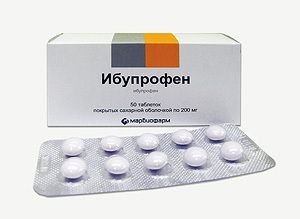 The only effective way to prevent the possibility of a syndrome is the withdrawal of Aspirin in the treatment of children.
The only effective way to prevent the possibility of a syndrome is the withdrawal of Aspirin in the treatment of children.
Now in many countries it is recommended to replace acetylsalicylic acid when treating children for such drugs as Paracetamol and Ibuprofen or if necessary, antipyretic therapy is provided.
At the slightest suspicion of the syndrome, you should urgently seek help from doctors, it is impossible to win the disease at home. The earlier the patient was taken to the hospital, the greater the chance of a favorable outcome.



